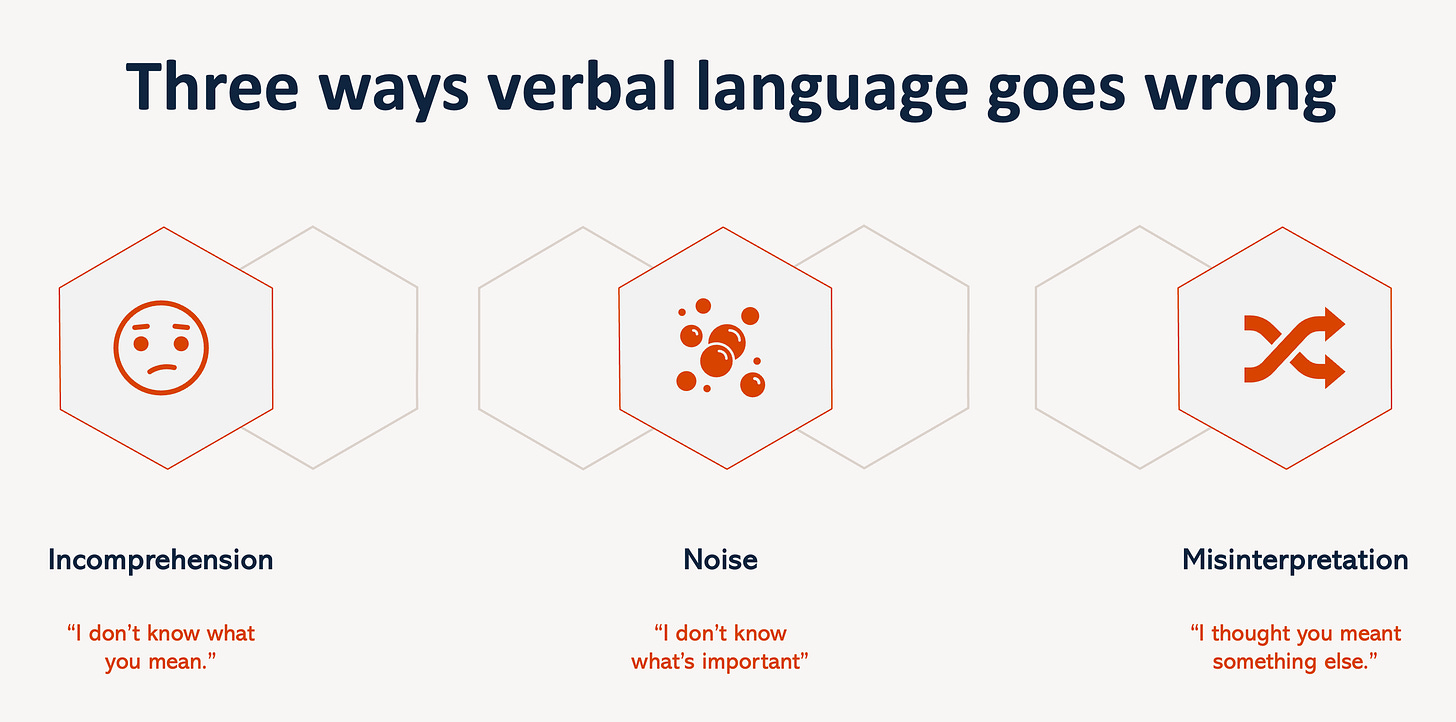Podcast is AI generated, and will make mistakes. Interactive transcript available in the podcast post.
There is a continuum in every class. Some kids learn despite us; they filter out the mistakes we make and see the point we intended. Others are lost.
When our communication is not logically faultless, there is always a risk than one or more children will be lost by what we say to them.
The further away from being logically faultless it is, the more children we lose.
The lower the set we are teaching, the more children we lose from communication that is not logically faultless.
Here are three ways that our use of language loses children:
Incomprehension
Noise
Misinterpretation
You can think of these as:
I don’t know what you mean
I don’t know what’s important
I thought you meant something else
For example, you ask students to add the torporiators.
…you ask them to add the numerators, but for many children you might as well be asking them to add the torporiators. Often we use technical language because we want students to learn it, but if we want them to learn it we have to teach it. Instead, we tend to explain the meaning of a technical word once, and then repeatedly use it in the hope that ‘it will stick.’ Instead, we’re at risk of saying something to students that they simply do not understand.
Or, we can waffle. I recently observed a lesson where 3:30 minutes were spent explaining one example for writing a ratio in the form 1:n. It could have been done in 14 seconds. As we keep talking it becomes increasingly difficult for students to hold on to what we said before (transient information effect,) and difficult to ascertain what’s important.
Finally, we can use words and symbols that have multiple meanings, for example asking students ‘what’s ten minus minus three,’ or presenting them with an equation and then saying ‘answer the question,’ despite there being no question there to answer. When we use words that can be interpreted in multiple ways we risk students latching on to the wrong interpretation in the moment, and again, we lose them.
Fortunately, each of these has a straightforward solution.
Keep reading with a 7-day free trial
Subscribe to Unstoppable Learning to keep reading this post and get 7 days of free access to the full post archives.



